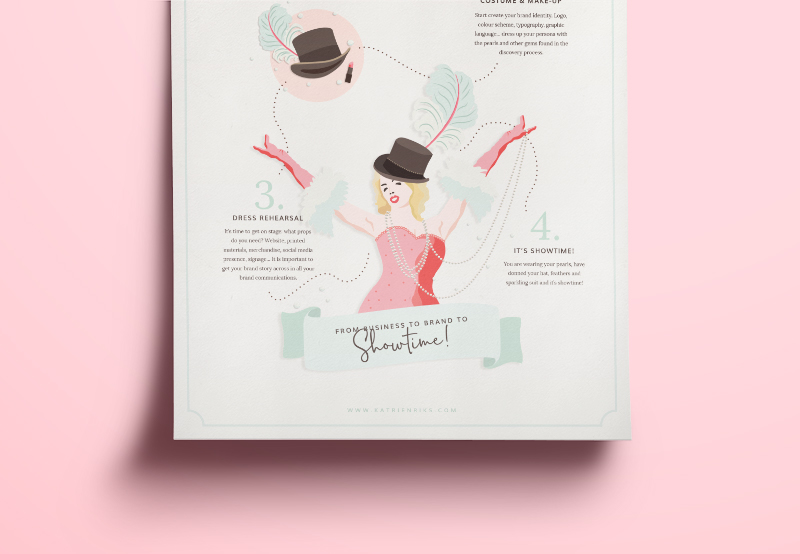Gender equality and equal pay are hot topics at the moment and the other day I read an article (from The Atlantic, sep 7 – 2016) about the pay gap and occupational segregation which triggered a memory from back in the days when I was at art school where I was enrolled in the Textile Design course.
What caught my eye was a statement talking about the devaluation of certain jobs mostly done by women:
Scholars have attempted to understand why occupations with a greater share of women pay less that those with a smaller proportion, even when they require the same level of education and skill. (…) A study (…), found that when women enter an occupation in large numbers, that job begins to pay less, even after controlling for a range of factors like skill, race, and geography. Their analysis found evidence of “devaluation”—that a higher proportion of women in an occupation leads to lower pay because of the discounting of work performed by women. (Original article here)
Nothing new, and very recognisable to me, although in a different area, namely the area of art and design and not so much regarding pay. What struck me in this fragment is the notion of devaluation: the discounting of work performed by women.
When I started going to art school I was still very young and I felt attracted to the world of patterns and prints, wallpaper and fabric design, so I chose to enrol in the Textile Design programme. The Textile Design classes consisted mostly of girls. It was definitely a feminine field with subjects as textile design, fashion, surface pattern design, knitting and weaving (feminine pastimes, surely 😉). We were also taught model drawing, art history, conceptual art and textile theory. A thorough education, really.
Girls who dabble.
But then, one day, we got talking to some guys further up the corridor where the departments of Graphic Design, Furniture Design and Architecture were located. And that’s where we, the students from Textile Design, were properly put into our place as we were referred to as the girls who dabble, the tinkerers, the hobbyists. It was very clear that it was the common view of the other departments of art school and it resonated with a niggling belief I also had: that “feminine” subjects such as fashion, textile design, pattern design, were not the real stuff, they didn’t belong to serious design, but to a field that was amusing, pretty, frivolous, decorative. Just not real serious design.
And so it is with other areas that are mostly seen as feminine and are occupied by women. Jobs that are mostly done by women are devalued when compared to jobs done by mostly men, as described in this article (and many others, for sure).
Now, as it happens, the whole “design and femininity” thing has become a pet subject of mine and it started to take shape in art school. I began to explore “feminine” taste and style in my work, play with it, taking it seriously, experimenting, and I discovered I had real feel for it. I also started to wonder why it is often reduced to a somewhat inferior place in design and why things feminine are so often seen as lower in status. Because I saw it then, and I see it now. There still is this deep-rooted belief in society, even if it’s subtle, that the masculine is more valuable. In money, in status, in work. I see many women often try to emulate the masculine style in their profession as it’s the norm and the only real example there is, especially when they work in male related professions, in the way they communicate, the way they present themselves, in the way they brand themselves.
Does design have to be serious?
But what if we could incorporate the feminine into more male related areas, such as banking, the tech world, the law (just to name some) and create a new, additional, way of presentation and communication. I am not an activist, but I am a designer who knows how to create wonderful feminine designs and surroundings for her clients and believes in creating beauty and enriching it with femininity. I would say, don’t be afraid of the feminine, but embrace it and also give it a place in the traditionally male areas of work and life.
And the question shouldn’t be “Can feminine design be serious design?” but “Does design need to be serious?”.
Latest Posts

I refreshed my branding and website!
My work is always evolving and so is my own brand. I felt it needed to be refreshed and brightened up and my showgirl also needed a make-over.

You don’t need to invent your brand, just like you don’t have to invent your own personality.
All is there already, just enhance, exaggerate and show it. Which is something Mae West understood like no other.

Get your show on the road. My branding process in 4 steps.
A strong brand is more than a website and a pretty logo. If you’re ready to develop your brand with depth and purpose, then you need the foundation to last.
Interested in working together?
Book your free 30-minute introductory call with me and share your challenges, ask questions, and talk about how I can help you. Click the button below, and I’ll look forward to helping you define the next best step for you.


